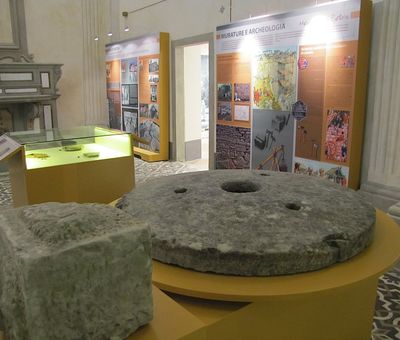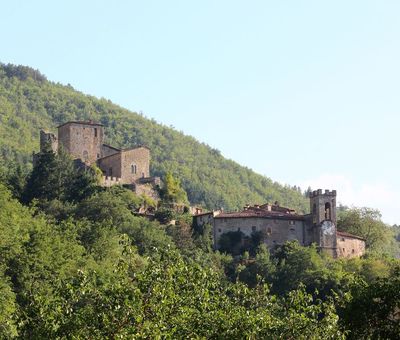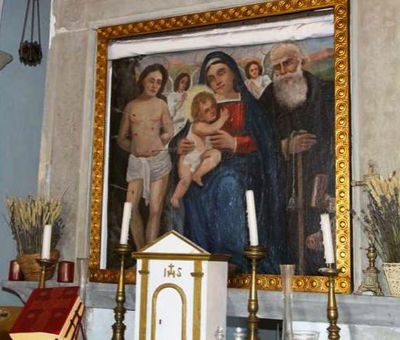The town of stone and stoneworking
Even today, you can feel the hammerblows and hear the sound of scapels in the old town streets. These are the tools that shape stone, just as they did hundreds of years ago. It is a millennia-old tradition that has been passed down through the generations in Castel San Niccolò, who are aware of the importance of preserving and transmitting it. This is why the Stone Museum was founded, in order to pay due homage to the material that, more than any other, has left its mark on this town, whether from the point of view of the landscape, the architecture, or even the myths and legends. Visiting Castel San Niccolò will also show you how here, stone really is everywhere: in the Castle of the Conti Guidi, in the Romanesque parish church, in the loggias that sheltered the market stalls, and in the old watermill.
In the house of the Devil
It’s imposing, and even a little bit scary. It must have always been so, because the castle that stands over the town comes with its own eerie legends and stories. The most famous concerns its very construction, which seemed to be going on forever. There was always something that happened which required that the work continue, and eventually the builders, stricken with fear, did not want to climb the hill of Ghianzuolo, which was thought to be the lodging of the Devil. They tried exorcisms, but to no avail: the hill remained inaccessible. They brought a relic of Saint Nicholas to drive out the malign spirit once and fall, and, as proof that their demon-hunting was successful, you can today an impress on the castle, known as the “Devil’s footprint”.
The bells that stopped the plague
Garliano is a little hamlet of Castel San Niccolò, a village in a village. Here the mountains can tell a story that is confirmed by historical sources. When Casentino, like the rest of Tuscany, was being riven by the plague, no one here fell ill. It is as if the four walls had protected the mountain dwellers. But they, the people of Garliano, have another theory. They reckon that those areas seemingly untouched by the plague were those within earshot of the bells of the church of the Maestà, home to a painting of the Madonna. The painting was then moved from the hilltop on which it stood to another little church, built in its honour. And if today you go up there, the villagers will be delighted to show you the bells and the little church with the “Madonna of the plague”, which has kept the place safe for centuries.







